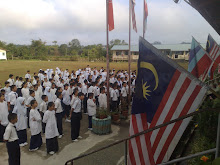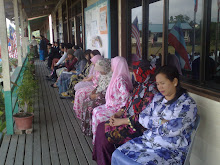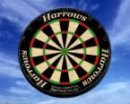 Selamat Hari Guru 2009
Selamat Hari Guru 2009"Guru Pembina Negara Bangsa"
 Mengajar anak didik tentang bagaimana membuat pendaftaran dalam web http://maribelajar.forumotion.com/forum.htm
Mengajar anak didik tentang bagaimana membuat pendaftaran dalam web http://maribelajar.forumotion.com/forum.htm B MAJOR
B MAJOR Fingers
Fingers Strings
Strings


PERTANDINGAN AKHIR SUGANDOI KAAMATAN 2009
SIAPAKAH di antara 10 finalis bakal dinobatkan juara Sugandoi Kaamatan Peringkat negeri 2009?
Peserta itu adalah...........?
Cuba teka siapa yang JOHAN......
Sugandoi Kaamatan malam tersebut dirasmikan oleh Huguan Siou Datuk Seri Panglima Joseph Pairin Kitingan yang juga telah menyampaikan hadiah kepada pemenang.
 A basic outline on how to play a keyboard, in addition to opinions on why you should buy one and how the keyboard measures up to the digital piano.
A basic outline on how to play a keyboard, in addition to opinions on why you should buy one and how the keyboard measures up to the digital piano.1 = thumb,
2 = index finger,
3 = middle finger,
4 = ring finger, and
5 = little/pinky finger.
This sheet music shows you, by placement of these numbers, which fingers play either the white or the black keys.
Learn how to read sheet music.
Play a tune on the keyboard in 1 of 2 ways:
either play a song you remember "by ear," or follow the sheet music.
Learn to play "by ear." Remembering the sound of a song and finding which notes on the keyboard to press is not easy to do. Here is how you can start.
Think of the keyboard as having 3 kinds of "brains," each of which is a type of memory. The first type of brain is called a sound brain, or more commonly known as a tone. This works by storing all the sounds like pianos, strings, flute, and even combines some of these tones to make new ones like "fantasy" or "synthesized " keyboard sounds. A 2nd sound brain is known as the "rhythm brain," called "rhythms" on some keyboards or "styles " on others. Here the keyboard sets off a whole little band of drums, bass guitar, piano and other combinations and allows you to play a right hand melody along with it. The other kind of keyboard brain or memory records what you play. For instance, if you played a left hand Bass guitar part, you could later play accompaniment with that. You could then play something entirely new, like a piano or voice melody, to "fit together" with what you originally recorded.
Decide between keyboards versus digital pianos. Consider the following:
Learning to play the keyboard seems easier than learning to play the piano in some ways. Some beginners find playing a keyboard easier to learn because they can play a larger variety of music, like pop, rock, country and jazz.
Don't confuse a keyboard with a synthesizer or a digital piano. These instruments have different abilities.
Classical music sounds far better played on a piano than a keyboard. A digital piano is comparable to a piano, but doesn't operate like a keyboard. A keyboard is more like a one-man band, and a fun way to learn music as a beginner.
Try taking it up a notch, play in a band. Get a couple of friends who can play drums and a another one who plays guitar. With the instruments, the guitar does chords in C major, the keyboard does the C major scale, and the drums outlines the rhythm patterns.
TIPS
 Teacher's Day is here. Lets pay respect to these Teachers which are our parents in our School Life through these Teacher' s Day Cards. They teach us everything and are the major architect of our life.
Teacher's Day is here. Lets pay respect to these Teachers which are our parents in our School Life through these Teacher' s Day Cards. They teach us everything and are the major architect of our life.
Pengurus Koir :
Pengurus : En.Haris Ibrahim - Guru Besar SK.Apin-Apin
Jurulatih : Pn.Joan Jerome - PK1 SK.Patikang Laut
Senarai Peserta :
1. Michael Rajimin - SK.Tuarid TaudPENDIDIKAN KE ARAH WAWASAN 2020
MENDIDIK ANAK
MENDUKUNG WAWASAN NEGARA
KAMILAH PENDIDIK YANG BERHEMAH TINGGI
JUJUR SETIA MINDA TERBUKA...
CABARAN BUKANNYA HALANGAN
TETAPI SATU PENGALAMAN
ILMU YANG DITIMBA DIKONGSI BERSAMA
MEMUPUK INSAN YANG SEJATI MULIA
DIANUGERAHKAN KELEBIHAN
KITALAH MASYARAKAT YANG PENUH PRIHATIN
HIDUP PENUH BERHARMONI....
MENDUKUNG CITA WAWASAN PENDIDIKAN
HINDAR SEMUA SEGALA KERAGUAN
ILMU DITIMBA TUJU KECEMERLANGAN.....
MUZIK....SOLO....ULANG Rangkap Ke-2 ( Cabaran.....)
 Gambar kenangan bersama dengan seorang yang pakar dalam bidang MOTIVASI DIRI tentang bagaimana memotivasikan diri dalam setiap tanggungjawab yang diberikan oleh sesebuah organisasi....Sesungguhnya....MOTIVASI DIRI merupakan senjata utama dalam memajukan sesebuah organisasi...Ibarat mencipta lagu iaitu...Irama dan Lagu tidak dapat dipisahkan
Gambar kenangan bersama dengan seorang yang pakar dalam bidang MOTIVASI DIRI tentang bagaimana memotivasikan diri dalam setiap tanggungjawab yang diberikan oleh sesebuah organisasi....Sesungguhnya....MOTIVASI DIRI merupakan senjata utama dalam memajukan sesebuah organisasi...Ibarat mencipta lagu iaitu...Irama dan Lagu tidak dapat dipisahkan

 Penyelenggaraan sistem pemarkahan di sekolah saya iaitu SK.Tuarid Taud amat mudah setelah salah seorang guru baru kami yang juga merupakan Guru Cemerlang telah membina sebuah sistem yang dipanggil PROGRAM MARKAH.
Penyelenggaraan sistem pemarkahan di sekolah saya iaitu SK.Tuarid Taud amat mudah setelah salah seorang guru baru kami yang juga merupakan Guru Cemerlang telah membina sebuah sistem yang dipanggil PROGRAM MARKAH.










